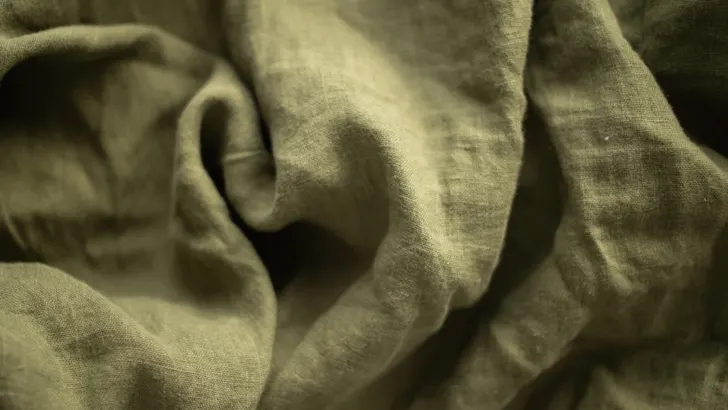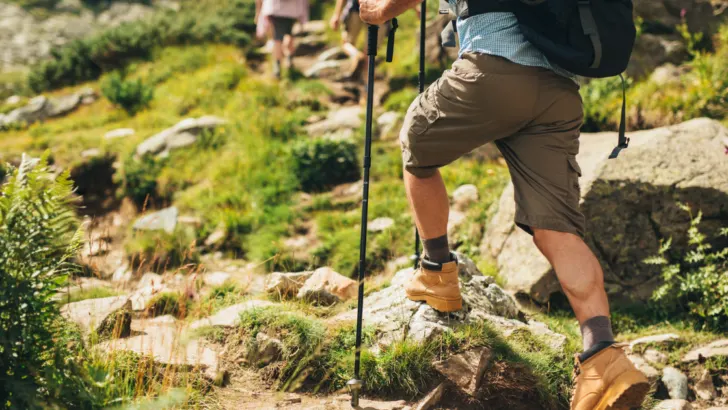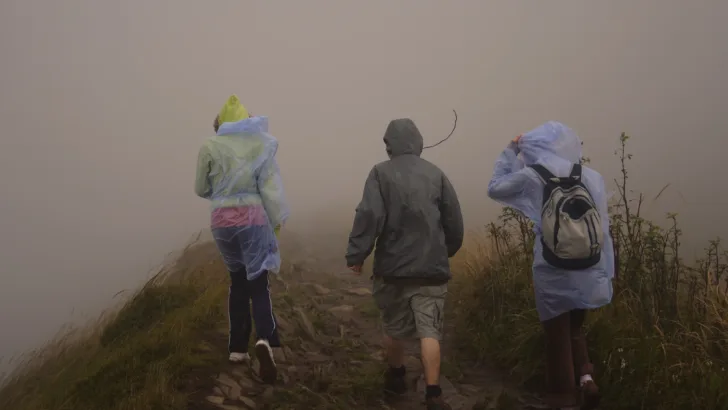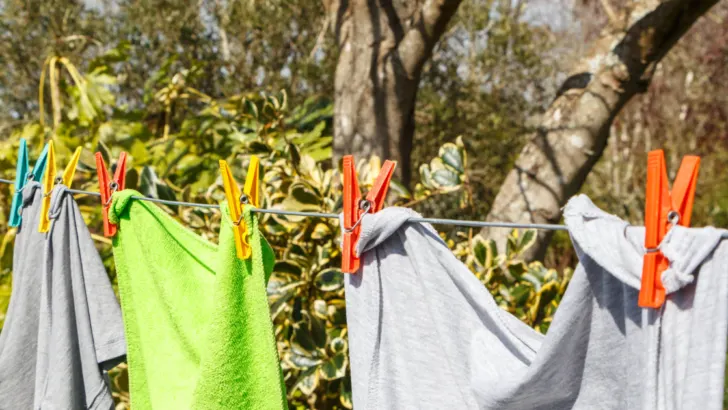Linen is a popular fabric known for its lightweight and breathable properties. As a hiker, it’s essential to choose the right clothing to ensure comfort and safety on the trail. But is linen good for hiking? In this article, I will explore the pros and cons of using linen for hiking, the benefits and drawbacks of linen, and how it compares to other materials.
Linen is a natural fiber that is made from the flax plant. It is known for its ability to wick moisture away from the skin and keep the body cool in hot weather. However, some hikers may be hesitant to use linen due to its reputation for wrinkles and lack of durability. In this article, I will examine the different types of linen and how they perform in different weather conditions, as well as provide a guide to caring for linen hiking clothing.
Is Linen Good for Hiking: The Pros and Cons
When it comes to hiking clothes, synthetic fibers are often the go-to choice for many hikers. However, I have recently switched to hiking in linen and have found it to be a great alternative. Here are some pros and cons to consider when using linen for hiking:
Pros
- Breathability: Linen is a highly breathable fabric that allows air to circulate around the body, which can help keep you cool and dry during hot and humid hikes.
- Comfort: Linen is a lightweight and soft fabric that can feel comfortable against the skin, even during long hikes.
- Sustainability: Linen is a natural fiber made from flax plants, which makes it an eco-friendly option for hikers who are conscious about their impact on the environment.
- Odor-resistant: Linen has natural antimicrobial properties that can help prevent the buildup of odors, which can be especially useful during multi-day hikes.

Cons
- Wrinkling: Linen is prone to wrinkling, which can make it look unkempt and unprofessional. However, this can be mitigated by choosing a linen blend fabric or by packing clothes carefully.
- Durability: Linen is not as durable as synthetic fibers like polyester, which means it may not hold up as well to wear and tear over time.
- Moisture-wicking: While linen is good at wicking away moisture, it may not be as effective as synthetic fibers at keeping you dry during intense hikes or in wet conditions.

Overall, while linen may not be the perfect choice for every hiking situation, it can be a comfortable and sustainable option for hikers who prioritize breathability and comfort.
The Benefits of Using Linen for Hiking
As someone who loves hiking, I am always looking for the best gear to make my outdoor adventures comfortable and enjoyable. Recently, I have been exploring the idea of using linen clothing for hiking and have found that it offers several benefits.
Firstly, linen is a lightweight and breathable fabric, which makes it ideal for hiking in warm weather. Its natural fibers allow air to circulate, keeping you cool and comfortable on the trail. In addition, linen is highly absorbent, which means it can absorb sweat and moisture, keeping you dry and preventing chafing.

Another benefit of linen is its durability. Despite its lightweight and delicate appearance, linen is a strong and sturdy fabric that can withstand wear and tear. This makes it perfect for long hikes and rugged terrain, where you need clothing that can hold up to the elements.
Linen also has antimicrobial properties, which means it naturally resists bacteria and odors. This makes it a great choice for multi-day hikes, where you may not have access to laundry facilities. Additionally, linen is easy to care for and can be machine washed and dried, making it a low-maintenance option for hiking gear.
Overall, I have found that using linen for hiking offers several benefits, including breathability, durability, and antimicrobial properties. If you are looking for a comfortable and practical option for your next hiking trip, consider adding linen clothing to your gear list.
The Drawbacks of Using Linen for Hiking
When it comes to hiking clothes, choosing the right fabric is crucial to ensure comfort and safety on the trail. While linen may seem like a viable option due to its breathability and cooling properties, there are some drawbacks to consider before using it for hiking.
Firstly, linen is not as durable as other fabrics commonly used for hiking clothes, such as polyester or nylon. Linen fibers are weaker and more prone to tearing, which means that linen clothes may not withstand the wear and tear of hiking trails as well as other fabrics. Additionally, linen tends to wrinkle easily, which can be an issue when packing for a multi-day hiking trip where space is limited.
Another drawback of using linen for hiking is its moisture retention. While linen is absorbent and can wick away sweat from the skin, it does not dry as quickly as synthetic fabrics. This means that if you get caught in rain or unexpectedly wet conditions, your linen clothes may take longer to dry, leaving you feeling damp and uncomfortable.

Finally, linen is not as versatile as other fabrics commonly used for hiking clothes. While it may be suitable for hot and dry conditions, it may not provide enough warmth or protection in cooler or wetter climates. This means that if you plan on hiking in various weather conditions, you may need to bring additional layers or switch to different fabrics altogether.
In conclusion, while linen may seem like a good option for hiking due to its breathability and cooling properties, it has some significant drawbacks to consider. If you decide to use linen for hiking, be aware of its limitations and make sure to bring additional layers or switch to different fabrics when necessary.
Comparison of Linen to Other Materials
When it comes to choosing the right fabric for hiking, there are several options available. In this section, I will compare linen to other popular materials used for hiking clothing.
Linen vs. Merino Wool
Merino wool is a popular choice for hiking clothing due to its breathability and moisture-wicking properties. While linen is also breathable and wicks moisture away from the skin, it does not provide as much warmth as Merino wool. However, linen is generally more lightweight and may be a better option for hiking in hot weather conditions.
Linen vs. Polyester
Polyester is a synthetic fabric that is commonly used for hiking clothing. While polyester is lightweight and dries quickly, it is not as breathable as linen. Additionally, polyester can retain odors, whereas linen does not.
Linen vs. Cotton
Cotton is a popular fabric for everyday clothing, but it is not ideal for hiking. Cotton absorbs moisture and takes a long time to dry, which can lead to discomfort and even hypothermia in cold weather conditions. Linen, on the other hand, is more breathable and wicks moisture away from the skin, making it a better option for hiking.
Linen vs. Linen Blends
Linen blends are fabrics that combine linen with other materials, such as cotton or polyester. While linen blends may offer some of the benefits of linen, they may not be as breathable or moisture-wicking as pure linen. Additionally, linen blends may not be as durable as pure linen.
Overall, while linen may not be the warmest fabric for hiking, it is a lightweight and breathable option that can help keep you comfortable in hot weather conditions. However, it is important to consider the weather conditions and your personal preferences when choosing the right fabric for your hiking clothing.
Linen Hiking Clothes
When it comes to hiking clothes, linen might not be the first fabric that comes to mind. However, linen can be a great option for hiking in certain conditions. In this section, I will discuss the benefits and drawbacks of linen hiking clothes and provide recommendations for linen hiking shirts, pants, and shorts.
Linen Hiking Shirts
Linen is a lightweight and breathable fabric that can help keep you cool on a hot day. Linen also has natural moisture-wicking properties that can help keep you dry during a sweaty hike. However, linen can wrinkle easily, and it may not be as durable as other fabrics like nylon or polyester.
If you’re considering a linen hiking shirt, look for one with a loose fit to allow for airflow. A button-up shirt with a collar can also provide sun protection for your neck and chest. Here are some recommended linen hiking shirts:
- Patagonia Men’s Island Hopper II Shirt
- Columbia Women’s PFG Tamiami II Long Sleeve Shirt
- Toad&Co Women’s Sunkissed Petal Short Sleeve Shirt
Linen Hiking Pants
Linen pants can be a comfortable and stylish option for hiking in moderate temperatures. Linen is a breathable fabric that can help keep you cool, but it may not provide enough insulation in colder weather. Linen can also be prone to wrinkling and may not be as durable as other fabrics.

If you’re looking for linen hiking pants, consider a loose-fitting style with an elastic waistband for comfort. Here are some recommended linen hiking pants:
- Royal Robbins Men’s Alpine Road Pants
- Eddie Bauer Women’s Adventurer Stretch Ripstop Crop Cargo Pants
- prAna Women’s Halle Straight Pants
Linen Hiking Shorts
Linen shorts can be a great option for hiking in hot weather. Linen is a lightweight and breathable fabric that can help keep you cool, but it may not provide enough protection from bugs or thorny plants. Linen can also wrinkle easily and may not be as durable as other fabrics.

If you’re considering linen hiking shorts, look for a loose fit with a comfortable waistband. Here are some recommended linen hiking shorts:
- Lululemon Men’s Commission Short
- Athleta Women’s Trekkie Short
- Toad&Co Women’s Sunkissed Cut Out Short
Overall, linen can be a comfortable and breathable option for hiking in moderate temperatures. However, it may not be as durable or protective as other fabrics, so it’s important to consider the conditions of your hike before choosing linen hiking clothes.
Linen for Hiking in Different Weather
As a hiking enthusiast, I have tried various fabrics for my outdoor adventures. One fabric that caught my attention is linen. Linen is a natural fabric that is lightweight, breathable, and durable. In this section, I will discuss how linen performs in different weather conditions.
Linen for Hiking in Hot Weather
Linen is an excellent choice for hiking in hot weather. It is lightweight and breathable, allowing air to circulate around your body, keeping you cool and comfortable. Linen also has moisture-wicking properties, which means it can absorb sweat and dry quickly, preventing you from feeling sticky and uncomfortable.
As someone who has hiked in hot weather, I can personally attest to the benefits and drawbacks of wearing linen. When the sun beats down and the temperature rises, linen becomes a lifesaver. Its lightweight nature allows me to move freely and effortlessly, without feeling weighed down by heavy fabric. The breathability of linen is a game-changer, as it lets cool air in and lets my skin breathe, preventing that suffocating feeling that can come with other materials.

One of the standout features of linen is its ability to wick away moisture. During intense hikes, when sweat is inevitable, linen comes to the rescue by absorbing the perspiration and drying quickly. This keeps me feeling fresh and prevents that uncomfortable stickiness that can occur with synthetic fabrics. The natural properties of linen help me stay cool, comfortable and focused on the trail ahead.
However, it’s important to note that linen does have its challenges in hot weather. The most apparent downside is its tendency to wrinkle easily. Even a well-packed linen shirt can emerge from a backpack with creases and folds. While some hikers may not mind the wrinkled look, for others, it can be a bit frustrating. Trying to smooth out those wrinkles while on the trail can be a hassle, as irons and steamers are not exactly backpack essentials.
Additionally, it’s worth mentioning that linen is not as durable as some other fabrics commonly used in outdoor apparel. While it holds up well under normal circumstances, it can be susceptible to tearing or snagging, especially in rugged terrain or dense vegetation. Being mindful of potential snags and avoiding sharp objects can help prolong the life of your linen hiking gear.
Linen for Hiking in Cold Weather
When it comes to hiking in cold weather, linen is not the go-to fabric for insulation. Its lightweight and breathable nature, while excellent for hot weather, can leave you feeling chilly in colder temperatures. However, that doesn’t mean you have to rule out linen completely.
In cold-weather hiking, linen can still have a role to play as a base layer. Its moisture-wicking properties come in handy, as it helps to draw sweat away from your body, keeping you dry and comfortable. By wearing a linen base layer, you can prevent the dampness that can lead to feeling cold and clammy during your hike.
To combat the lack of insulation that linen offers, layering becomes essential. Consider adding other fabrics such as wool or fleece over your linen base layer. Wool is an excellent choice for its natural warmth and insulation properties, trapping heat close to your body. Fleece, on the other hand, provides additional insulation and helps retain body heat.

By combining linen with these insulating layers, you can create a system that keeps you comfortable and warm during your cold weather hikes. The moisture-wicking properties of linen will continue to work, ensuring you stay dry and avoiding the discomfort of perspiration buildup.
It’s important to remember that while linen can be a part of your cold-weather hiking attire, it may not be the primary fabric for insulation. Layering with appropriate materials will provide the necessary warmth and protection against the elements. By incorporating linen as a moisture-wicking base layer, you can enjoy the benefits of its breathability and comfort while staying cozy on your cold-weather adventures.
Linen for Hiking in Wet Weather
When it comes to hiking in wet weather, linen may not be the most ideal fabric choice. Its natural absorbency can work against you, as it quickly absorbs water and takes a significant amount of time to dry. This can leave you feeling cold, and uncomfortable, and potentially increase the risk of hypothermia if you get caught in a heavy downpour.
However, that doesn’t mean you have to completely avoid wearing linen during wet hikes. You can still make use of its moisture-wicking properties by incorporating it as a base layer. By wearing a linen base layer, it can help draw moisture away from your skin, keeping you drier and more comfortable.
To ensure protection from the rain, layering becomes crucial. Consider adding synthetic or waterproof materials over your linen base layer. Synthetic fabrics like polyester or nylon have quick-drying properties and can repel water, providing an extra layer of protection against moisture. Alternatively, opt for waterproof jackets or pants made from materials specifically designed to keep you dry during wet conditions.

By layering with these fabrics, you can create a barrier that helps shield you from the rain while still benefiting from the moisture-wicking abilities of linen. This combination allows for better moisture management and helps to keep you comfortable throughout your wet weather hike.
It’s important to note that while linen may not be the best choice for direct exposure to wet conditions, utilizing it as a base layer in conjunction with appropriate outer layers can still offer some advantages. The key is to prioritize fabrics that are quick-drying and water-resistant to keep you dry and protected from the elements.
Remember, when venturing into wet weather hikes, always check the weather forecast and come prepared with the right gear and clothing to ensure your safety and comfort throughout the journey.
In conclusion, linen is an excellent fabric for hiking in hot weather. It is lightweight, breathable, and moisture-wicking. However, it is not the best choice for hiking in cold or wet weather. It does not provide much insulation and can absorb water quickly. If you are planning to hike in different weather conditions, it is best to bring a variety of fabrics to ensure you are comfortable and protected.
A Comparison of Different Types of Linen
When it comes to hiking, choosing the right fabric for your clothing is essential. Linen is a popular choice due to its lightweight and breathable nature, but not all linen fabrics are created equal. Here’s a comparison of different types of linen:
Pure Linen
Pure linen is made from the fibers of the flax plant and is the most common type of linen fabric. It is lightweight, breathable, and has excellent moisture-wicking properties, making it a great choice for hiking in hot weather. However, it wrinkles easily and is not very durable.
Irish Linen
Irish linen is a type of pure linen that is made in Ireland. It is known for its exceptional quality and durability, making it a great choice for hiking clothes that need to withstand wear and tear. It is also more expensive than other types of linen.
Belgian Linen
Belgian linen is another type of pure linen that is known for its exceptional quality. It is made in Belgium and is often used for high-end clothing and home decor. It is more expensive than other types of linen but is also more durable and has a softer feel.
Linen Blends
Linen blends are fabrics that combine linen with other fibers, such as cotton or polyester. They offer the best of both worlds, combining the breathability and moisture-wicking properties of linen with the durability and wrinkle resistance of other fibers. Linen-cotton blends are a popular choice for hiking clothes as they are lightweight and breathable, yet more durable than pure linen.
In conclusion, when it comes to hiking clothes, linen can be a great choice due to its lightweight and breathable nature. However, it’s important to consider the type of linen fabric you choose, as some are more durable and wrinkle-resistant than others. A linen-cotton blend may be the best choice for those looking for a balance of breathability and durability.
A Guide to Caring for Linen Hiking Clothing
As someone who loves hiking and is also a fan of linen clothing, I understand the appeal of wearing linen on a hike. Linen is a lightweight, breathable fabric that can keep you cool and comfortable on a hot day. However, like any clothing material, linen requires proper care to ensure it lasts as long as possible. Here is a guide to caring for your linen hiking clothing:
Washing
When it comes to caring for your linen hiking apparel, proper washing techniques are essential to maintain its quality and longevity. To ensure the best results, follow these tips:
- Gentle cycle and cool water: Opt for a gentle or delicate cycle on your washing machine, using cool water. Hot water can cause linen to shrink, so it’s important to avoid high temperatures.
- Mild detergent for delicate fabrics: Choose a mild detergent specifically designed for delicate fabrics. Harsh detergents can damage the natural fibers of linen. Look for products that are gentle and free from harsh chemicals.
- Avoid overloading the machine: To prevent excessive friction and potential damage to your linen, avoid overloading the washing machine. Give your items enough space to move freely during the cycle.
- Skip the fabric softener: Linen naturally softens with each wash, so there’s no need to use fabric softener. In fact, fabric softeners can leave a residue on the fabric and reduce its absorbency.
- Add white vinegar for rinsing: During the rinse cycle, adding a cup of white vinegar can help remove any lingering soap residue and restore the softness of your linen. Vinegar also acts as a natural fabric conditioner.
- Air drying is best: After washing, avoid using the dryer as high heat can cause shrinkage and damage to linen fibers. Instead, opt for air drying by laying your linen garments flat or hanging them up. Avoid direct sunlight to prevent fading.

By following these washing guidelines, you can keep your linen hiking apparel clean, fresh, and in great condition for your future outdoor adventures. Remember, proper care extends the lifespan of your linen garments, allowing you to enjoy their lightweight and breathable properties for years to come.
Drying
To preserve the quality and shape of your linen clothing, it’s important to avoid using a dryer and opt for air drying instead. Here’s how to air-dry your linen garments effectively:
- Hang it up: After washing, hang your linen clothing on a clothesline or a sturdy hanger. Ensure there’s enough space between garments for air circulation.
- Lay it flat: For delicate linen items or those prone to stretching, lay them flat on a clean towel or a mesh drying rack. Gently reshape the garment to its original form.
- Avoid direct sunlight: While drying, choose a shaded or well-ventilated area to prevent direct exposure to sunlight. Prolonged sun exposure can cause fading and damage to the fabric fibers.
- Speed up drying time: If you need to speed up the drying process, use a fan or an air conditioning unit to create air movement in the drying area. This helps facilitate quicker evaporation of moisture.
- Smooth out wrinkles: Once your linen clothing is dry, you may notice some wrinkles. To smoothen them out, gently iron the garment using a low to medium heat setting. Alternatively, you can steam the wrinkles out using a handheld steamer.

By following these air-drying tips, you’ll ensure that your linen clothing retains its shape, avoids shrinkage, and maintains its natural breathability. Embrace the gentle drying process, and your linen garments will stay fresh, crisp, and ready for your next hiking adventure.
Ironing
Linen’s tendency to wrinkle is a common characteristic, but with proper ironing techniques, you can easily achieve a smooth, wrinkle-free look. Follow these steps to iron your linen garments effectively:
- Prepare the iron: Set your iron to a warm temperature suitable for linen. Avoid using high heat, as it may scorch or damage the fabric.
- Dampen the linen: Lightly dampen the wrinkled areas of the linen garment with water. You can use a spray bottle or simply iron the linen while it’s still slightly damp from washing.
- Iron the fabric: Place the linen garment on an ironing board or a flat, heat-resistant surface. Start ironing the dampened areas, working in small sections at a time. Gently press the iron onto the fabric and move it in straight, even strokes. Avoid applying excessive pressure to prevent stretching or distorting the linen.
- Focus on wrinkles: Pay special attention to the most wrinkled areas, such as collars, cuffs, and seams. For stubborn wrinkles, you can apply a bit more steam or use a burst of steam from the iron to help release them.
- Test a small area: If you prefer using a steamer, ensure you test a small, inconspicuous area of the linen garment first to avoid any potential damage. Once you confirm it’s safe, proceed to steam the remaining areas, holding the steamer a few inches away from the fabric and gently gliding it over the wrinkles.

By using these ironing techniques, you can effectively remove wrinkles from your linen garments, restoring their smooth and polished appearance. Embrace the natural beauty of linen while maintaining a crisp, well-pressed look for your hiking attire.
Storing
Proper storage is key to maintaining the quality of your linen hiking clothing. Follow these tips to ensure your linen stays in great condition:
- Choose a cool, dry location: Find a storage area that is away from direct sunlight and excessive heat, as these can cause fading and damage to the fabric. Opt for a cool, well-ventilated space to keep your linen fresh.
- Avoid damp environments: Moisture can lead to the growth of mildew and mold on linen. Make sure the storage area is dry and free from excessive humidity. If necessary, use a dehumidifier or silica gel packets to absorb moisture.
- Clean before storing: Always ensure your linen hiking clothing is clean and dry before storing it. Any residual sweat or dirt can attract pests or cause stains to set in over time.
- Use a garment bag or cover: Protect your linen clothing from dust, insects, and potential snags by storing them in a breathable garment bag or covering them with a cotton or muslin cloth. This will help maintain the fabric’s freshness and prevent any unwanted damage.
- Don’t overcrowd: Avoid overcrowding your storage space to allow proper airflow around the linen garments. This helps prevent creasing and allows the fabric to breathe.
By following these storage tips, you can preserve the quality and longevity of your linen hiking clothing, ensuring they’re ready for your next outdoor adventure.
Overall, linen can be a great choice for hiking clothing, as long as it’s cared for properly. By following these simple tips, you can keep your linen hiking clothing looking great and feeling comfortable on the trail.
Case Study of a Hiker Who Successfully Used Linen for Hiking
I have been an avid hiker for years, and I have tried many different types of clothing for my hikes. Recently, I decided to give linen a try, and I have to say, I was pleasantly surprised by how well it worked for me.
On a recent hike in the mountains, I wore a lightweight linen shirt and pants. The weather was warm, and I was a bit worried that I might get too hot in the linen, but I found that the fabric was very breathable and kept me quite cool. I also appreciated the fact that the linen did not cling to my skin like some synthetic fabrics do.
One thing I noticed right away was that the linen did not wrinkle as much as I thought it would. I had read that linen tends to wrinkle easily, but I found that the wrinkles were not very noticeable, even after hours of hiking.

Another benefit of wearing linen on my hike was that it did not retain odors like some other fabrics can. Even after a long day of hiking, my linen shirt did not smell bad, which was a welcome change from some of my other hiking clothes.
Overall, I found that wearing linen on my hike was a great choice. The fabric was lightweight, breathable, and comfortable, and it held up well to the rigors of hiking. I would definitely recommend giving linen a try if you are looking for a new fabric for your hiking clothes.
After reading our article on whether or not linen is good for hiking, you may be wondering how to stretch your hiking boots so that they fit properly. We have a helpful guide on how to do just that in our other article ‘How To Stretch Hiking Boots‘.
Resources
- U.S. National Park Service nps.gov
- U.S. Forest Service fs.usda.gov
- National Oceanic and Atmospheric Administration (NOAA) noaa.gov
- Leave No Trace Center for Outdoor Ethics lnt.org
Frequently Asked Questions
Are linen hiking pants a good choice for hot weather?
Linen hiking pants can be a great choice for hot weather. Linen is a lightweight and breathable fabric that allows air to circulate around your body, helping to keep you cool and comfortable. Additionally, linen is highly absorbent, which means it can wick away sweat from your skin, keeping you dry and preventing chafing.
What are the benefits of wearing linen clothing for hiking?
Linen clothing has several benefits for hiking. First, linen is lightweight and breathable, which helps keep you cool and comfortable on the trail. Second, linen is highly absorbent, meaning it can wick away sweat from your skin, keeping you dry and preventing chafing. Third, linen is durable and can withstand the wear and tear of hiking. Finally, linen is a natural fabric that is environmentally friendly.
Are linen shirts suitable for hiking?
Linen shirts can be suitable for hiking, especially in hot weather. Linen is a lightweight and breathable fabric that allows air to circulate around your body, helping to keep you cool and comfortable. Additionally, linen is highly absorbent, which means it can wick away sweat from your skin, keeping you dry and preventing chafing. However, linen shirts may not be the best choice for colder weather or for hiking in wet conditions.
What are some alternatives to linen for breathable hiking clothing?
There are several alternatives to linen for breathable hiking clothing. Some popular options include merino wool, polyester, and nylon. Merino wool is a natural fiber that is lightweight, breathable, and moisture-wicking. Polyester and nylon are synthetic fibers that are lightweight, durable, and quick-drying.
Can linen shorts be comfortable for hiking?
Linen shorts can be comfortable for hiking, especially in hot weather. Linen is a lightweight and breathable fabric that allows air to circulate around your body, helping to keep you cool and comfortable. Additionally, linen is highly absorbent, which means it can wick away sweat from your skin, keeping you dry and preventing chafing. However, linen shorts may not be the best choice for colder weather or for hiking in wet conditions.
What are the best fabrics for hiking in hot weather?
The best fabrics for hiking in hot weather are lightweight, breathable, and moisture-wicking. Some popular options include linen, merino wool, polyester, and nylon. Linen is a natural fabric that is lightweight and breathable, while merino wool is a natural fiber that is lightweight, breathable, and moisture-wicking. Polyester and nylon are synthetic fibers that are lightweight, durable, and quick-drying. Ultimately, the best fabric for hiking in hot weather will depend on your personal preferences and the specific conditions of your hike.
